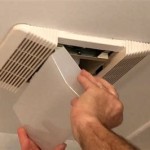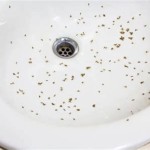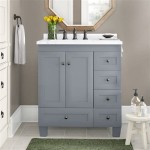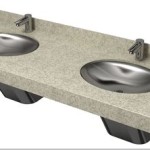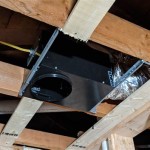Bathroom Sink Drain Elbow: A Crucial Plumbing Component
The bathroom sink drain elbow is a vital plumbing component that plays a crucial role in directing wastewater from the sink to the drainpipe. This seemingly simple yet essential fitting connects the sink's drainpipe to the main drain line, ensuring a smooth and efficient flow of water. Without a properly functioning drain elbow, water could back up into the sink, causing unpleasant odors and potential plumbing problems. This article will delve into the details of bathroom sink drain elbows, exploring their function, types, and installation.
Function of a Bathroom Sink Drain Elbow
The primary function of a bathroom sink drain elbow is to connect the sink's drainpipe to the main drain line. This connection enables the smooth flow of used water from the sink to the drainage system. The drain elbow is designed to create an angled turn, allowing the water to flow downwards and away from the sink. This angled design prevents wastewater from backing up into the sink, ensuring that the sink remains usable and free from foul odors.
Furthermore, the drain elbow acts as a sealing point, preventing leaks from occurring at the junction between the sink drainpipe and the main drain line. Its carefully engineered design and the use of specialized materials create a tight seal around the connection, safeguarding against water seepage.
Types of Bathroom Sink Drain Elbows
Bathroom sink drain elbows come in various materials and designs, each offering unique advantages and suited for specific applications. Some common types include:
1. ABS drain elbow
ABS (Acrylonitrile Butadiene Styrene) is a common plastic material used for plumbing applications. ABS drain elbows are lightweight, durable, and corrosion-resistant, making them a popular choice for bathroom sinks. They are readily available in various sizes and configurations, making them versatile and adaptable to different plumbing setups.
2. PVC drain elbow
PVC (Polyvinyl Chloride) is another widely used plastic material in plumbing. PVC drain elbows share many similarities with ABS drain elbows, offering durability, corrosion resistance, and affordability. However, PVC elbows are typically more rigid than ABS elbows, which can sometimes make installation more challenging.
3. Brass drain elbow
Brass drain elbows are a more durable and longer-lasting alternative to plastic elbows. They are known for their resistance to corrosion and their ability to withstand higher temperatures. Brass elbows are often preferred for applications where longevity and durability are paramount. However, they are also more expensive than plastic alternatives.
4. P-trap drain elbow
A P-trap is a specialized type of drain elbow that features a U-shaped bend, creating a water seal that prevents sewer gases from entering the bathroom. This is crucial for maintaining good air quality and hygiene. P-traps are typically made of ABS or PVC and are essential for most bathroom sink installations, ensuring that sewer gases are effectively blocked.
Installing a Bathroom Sink Drain Elbow
Installing a bathroom sink drain elbow is a relatively straightforward process that can be done by most homeowners with basic plumbing skills. However, it is advisable to consult a professional plumber for any complex or challenging installations. Here are the general steps involved in replacing a bathroom sink drain elbow:
1. Disconnect the existing drain elbow
Begin by disconnecting the existing drain elbow from the sink drainpipe and the main drain line. This may require loosening or removing nuts, bolts, or other fasteners depending on the type of drain elbow and installation method.
2. Clean the drainpipe and fittings
Before installing the new drain elbow, thoroughly clean the existing drainpipe and fittings to remove any debris or blockages. This will ensure that the new elbow can be installed properly and that water can flow freely through the system.
3. Install the new drain elbow
Position the new drain elbow in place, aligning it with the sink drainpipe and the main drain line. Secure the elbow using appropriate nuts, bolts, or other fasteners. Ensure that the elbow is correctly installed and that all connections are tight to prevent leaks.
4. Test for leaks
After installing the new drain elbow, run water through the sink to test for leaks. Check all connections and ensure that there is no seepage. If any leaks are found, tighten the connections or adjust the position of the drain elbow until the leak is eliminated.

Oatey 1 2 In 90 Degree Plastic Double Slip Joint Sink Drain Elbow Pipe White Hdc9675 The Home Depot

Oatey 1 2 In 90 Degree Plastic Double Slip Joint Sink Drain Elbow Pipe White Hdc9675 The Home Depot

Oatey 1 2 In White 45 Plastic Double Slip Joint Sink Drain Elbow Pipe Hdc9665 The Home Depot

Oatey 1 2 In White 45 Plastic Double Slip Joint Sink Drain Elbow Pipe Hdc9665 The Home Depot

Oatey 1 2 In 90 Degree Plastic Double Slip Joint Sink Drain Elbow Pipe White Hdc9675 The Home Depot

Elbow Under Sink Plumbing At Com
How To Change An Elbow Drain Pipe Under A Sink Hunker

Oatey 1 2 In 90 Degree Plastic Double Slip Joint Sink Drain Elbow Pipe White Hdc9675 The Home Depot

Keeney 1 2 In Plastic Disposal Elbow The Under Sink Plumbing Department At Com

Highcraft 19121 Slip Elbow For Tubular Drain S 1 4 In X 12 22ga Chrome Plated Brass Com
Related Posts
